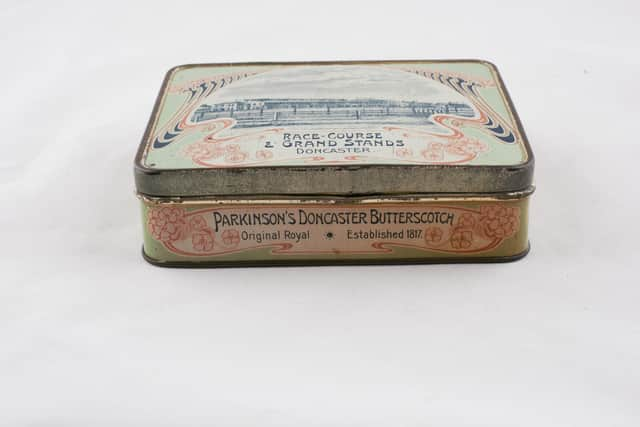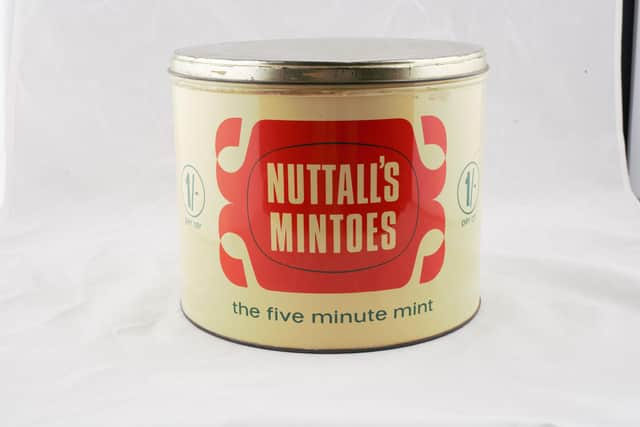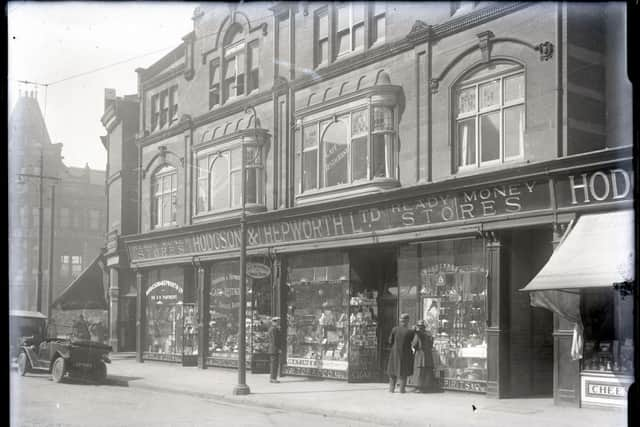Did you know that Doncaster confectioners invented two iconic sweets that became global favourites?
and live on Freeview channel 276
During new virtual history clubs, people have been uncovering South Yorkshire’s 200-year-old sweet story with the help of the friendly experts at Heritage Doncaster.
They have explored archives and investigated objects that reveal how the region was at the forefront of the world’s confectionery industry for over 100 years, even supplying sweets to the Royal Family.
Advertisement
Hide AdAdvertisement
Hide AdIt all started in 1817, when Samuel Parkinson invented a treat called butterscotch for his confectionery store on Doncaster High Street. The sweet was little more than a local treat but then in 1851 Parkinson cannily presented his butterscotch to Queen Victoria when she opened the St Leger horse race.


She enjoyed it so much that he was appointed sole supplier to the Royal Family and Parkinson’s Butterscotch became famous.
Almost 100 years later, Parkinson’s Butterscotch was still a royal favourite, with a tin presented to a young Princess Elizabeth in 1948.
During the First World War, Parkinson’s Butterscotch cheered the spirits of South Yorkshire soldiers fighting over Christmas, packaged up in comfort packs sent from home. It also experienced a boom after the Second World War, when the end of rationing and the craving for sweet treats prompted huge sales.
Advertisement
Hide AdAdvertisement
Hide AdSadly, as more brands entered the market in the 20th century, Parkinson’s was forced to close but the original recipe survived in Doncaster.


A tin of locally-made butterscotch was presented to the Princess Royal in 2007 when she visited to reopen Doncaster Racecourse.
Today butterscotch is a favourite flavour across the globe.
By the 1900s, South Yorkshire was on the verge of yet another sweet victory, when engine-driver turned confectioner William Nuttall was experimenting with a selection of mint-flavoured sweets in his Doncaster sweet shop. He invented Mint Dainties – later renamed Nuttall’s Mintoes – and they became a global phenomenon.
The small family business expanded at such a rate that Nuttall was soon opening two more shops and a second factory to keep up with demand.


Advertisement
Hide AdAdvertisement
Hide AdAt one point, they even had to suspend production to cope with the rush of orders from many parts of the world: “We are a hundred tons behind, in fulfilling our orders”, said Mr Nuttall “and every day I receive letters, telegrams and telephone messages complaining of the delay in fulfilling orders we have in hand”.
By the late 1950s, the original factory was producing over 4,000 tonnes of Mintoes per week and employed 300 people, yet the world’s appetite for the sweets continued to grow.
Mintoes were now being exported all over the world, from America to Argentina, and Germany to Finland.
By 1971, Doncaster Evening Post was reporting that “A boom in the worldwide demand for the famous Nuttall’s Mintoe – ‘the five-minute mint’ – has resulted in a £90,000 extension programme at the Doncaster factory.”
Advertisement
Hide AdAdvertisement
Hide AdToday, Nuttall’s Mintoes are still being enjoyed around the world, although now made in Shropshire. Nuttall was not only a successful businessman; as one of Doncaster’s most generous benefactors, he was able to use his earnings to help others.
He said: “If a man can’t do what he is able to do to help other people who need help without shouting about it from the rooftops, it’s a pity.”
He gave away large sums of money to charities and in 1930 he provided £40,000 to fund the development of William Nuttall Cottage Homes for retired women, inspired by one of his employees who found herself on retirement without a place to live.
“It’s a remarkable story, and that’s exactly what our virtual social clubs, like History Book Club or Museum Make-a-Long are all about - unearthing extraordinary real-life stories about local people from the past, and bringing them to life in all sorts of creative ways,” explains Victoria Ryves from Heritage Doncaster.
Advertisement
Hide AdAdvertisement
Hide AdShe’s designed the virtual social clubs as part of pioneering project History, Health & Happiness, supported by Arts Council England (ACE).
She adds: “As a tribute to South Yorkshire’s sweet heritage, we’ve even been having a go at making marzipan fruits. It’s not as easy as we all imagined but it’s great fun to get together – even if it’s digitally for the moment – and have a go!
"During these difficult times when it’s so easy to feel cut off and lonely, it’s wonderful to be bringing people together, having fun, enjoying conversations, sharing experiences, and learning something new. Everyone’s welcome to join in!”
One member of the History Book Club has an extraordinary story: following a family tragedy, Liz Reeve was inspired to find out more about the many families who’d lived in her neighbourhood through the early 20th century.
Advertisement
Hide AdAdvertisement
Hide AdShe’s already written several books around her own family history, which she self-published, and work on a new oral history project with the elderly residents of Sprotbrough village was well on the way when lockdown occurred.
Liz says: “During lockdown, I couldn’t meet with my local group any more but it provided a good opportunity to write up the research and interviews already undertaken to finalise Sprotbrough: From Rural Estate to Real Estate, which was published just this month.”
“I joined Heritage Doncaster’s History Book Club out of interest,” Liz adds. “I’ve learned something new every day.
“What I know about history was just picked up at school or throughout my life, so it’s been really useful to be reading books and learning historian’s techniques, like how to question people when recording oral histories.
Advertisement
Hide AdAdvertisement
Hide Ad“So much of our local history is researched and preserved by local people and volunteers. History belongs to everyone, so if you’ve got an interest in what happened to your family or your neighbourhood in the past, or if you have life adventures to share, give it a go – it’s hugely rewarding!”
For a copy of Liz’s book, email [email protected].
To get involved in Heritage Doncaster’s virtual social clubs, or to download free activity packs helping you explore history at home, visit www.heritagedoncaster.org.uk or Facebook and Twitter @DoncasterMuseum.
*In these confusing and worrying times, local journalism is more vital than ever. Thanks to everyone who helps us ask the questions that matter by taking out a digital subscription or buying a paper. We stand together. Nancy Fielder, editor.